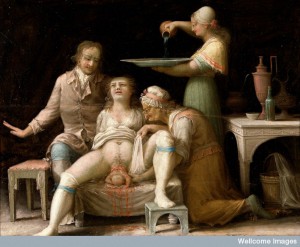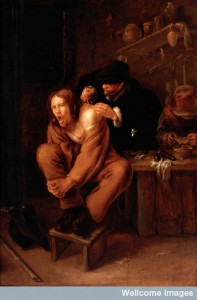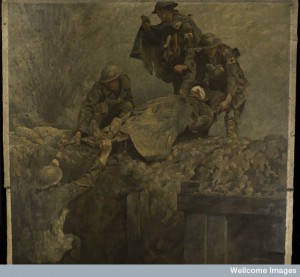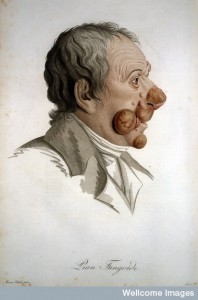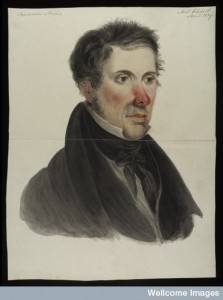
The image I chose from Wellcome Images does not have an artist’s name but it was “taken from the Apocalypsis S. Johannis cum glossis et Vita S. Johannis; Ars Moriendi (circa 1420 to 1430), which were gynaecological texts that included information about conception, pregnancy, and childbirth”. This image is an ink and watercolor illustration that shows a caesarean section in medieval times. The woman on the table is still cut open, bleeding and dead. The nurse is holding the baby that was just born in a blanket. The surgeon, although doesn’t look like a typical surgeon is holding a knife, a knife that you would cut a piece of meat with. This picture is not easy to look at, especially for a woman. Most women, who underwent a C-section in medieval times, did not make it due to the severe bleeding that occurred. Sterile techniques were not in place, allowing infection to play a big role in death. This image relates to the images we saw in class with the woman and child at the doctor’s office. Similar to those images, we can conclude that back then doctor offices did not look sterile, proper or how we would expect them to look. Physicians looked like ordinary people. As you can see in this drawing, the room has no surgical supplies besides the butcher knife. There is also no means of sedation or pain medication. The amount of pain, infections and blood loss experienced by the mother was more than enough to guarantee death after the birth of a child.

